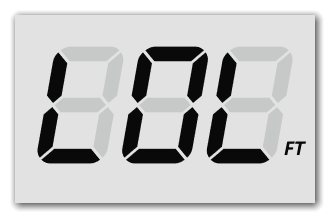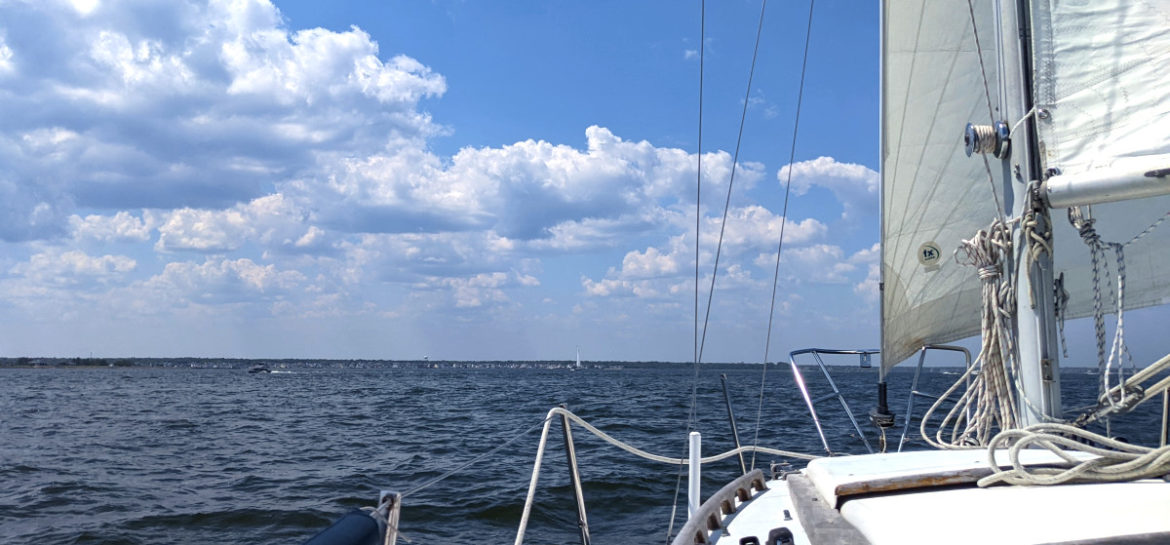
Between the weekend weather patterns, land-based obligations, and the general malaise of living in the present, sailing has been somewhat sparse. But greater than zero.
As has become the norm, I drove down the night before and slept on the boat, hoping to avoid the worst of the shore traffic. Jenn was late arriving in the morning (unexpectedly, due to shore traffic) so I went and bought a new hose to replace the one that had been mysteriously destroyed. I have traditionally bought the specialized food-grade garden hoses for this purpose, since it seems like that’s what everyone else does and they usually sport a more nautical color scheme, but I have spoken to the bleach-resistant Cthulhu that appears in my water tank from time to time, and there’s no way I’d ever drink that water. I instead opted for “the cheapest possible hose,” since they don’t seem to have a long life span in this environment and are apparently prone to spontaneous annihilation. I have a suspicion that this is non-potable water anyway.
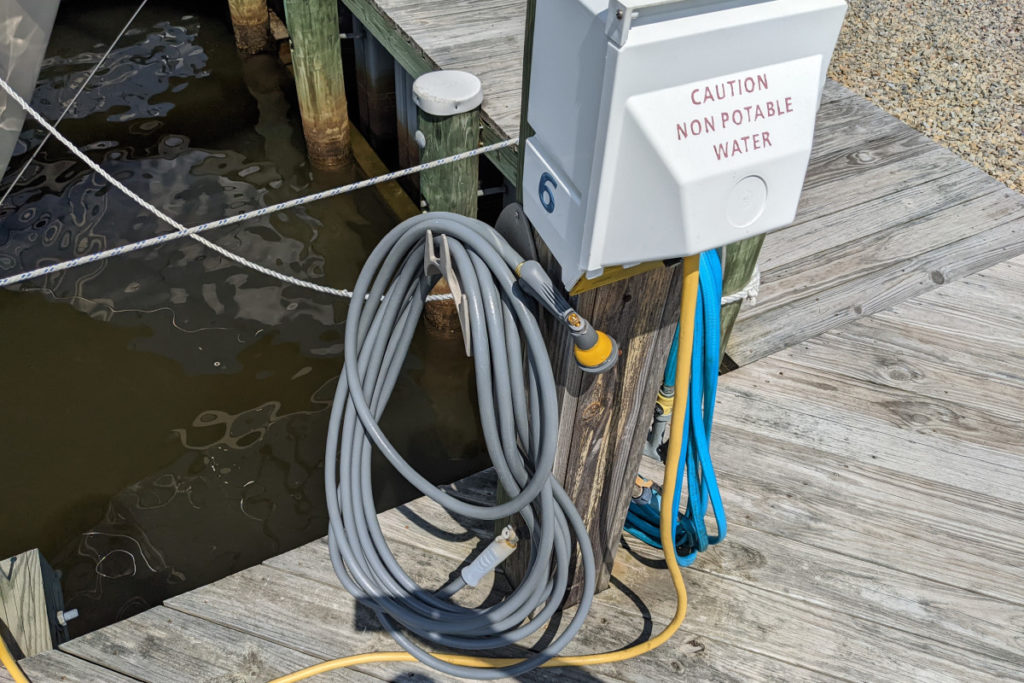
I had the boat ready to go by the time Jenn arrived, and we shoved off almost immediately. The wind was ideal for a lazy sail, about 15kts from the south. We hoisted the main just outside the creek and pointed the boat down the bay, then unfurled the full genoa.
I asked Jenn if there was anything in particular that she wanted to do and she said that she wanted to run tacking drills. That’s kind of the opposite of the lazy sail, but that’s what she wanted to do, so…”ready about.” I will say that there have been times when I’ve been critical of our tacking prowess. I used to race a lot, and to some degree am always racing, so I probably have unrealistic expectations of how snappy a tack should be on a daysail to nowhere, although I don’t think it’s entirely spurious to note that sometimes it actually is important to be able to tack quickly and is representative of good seamanship.
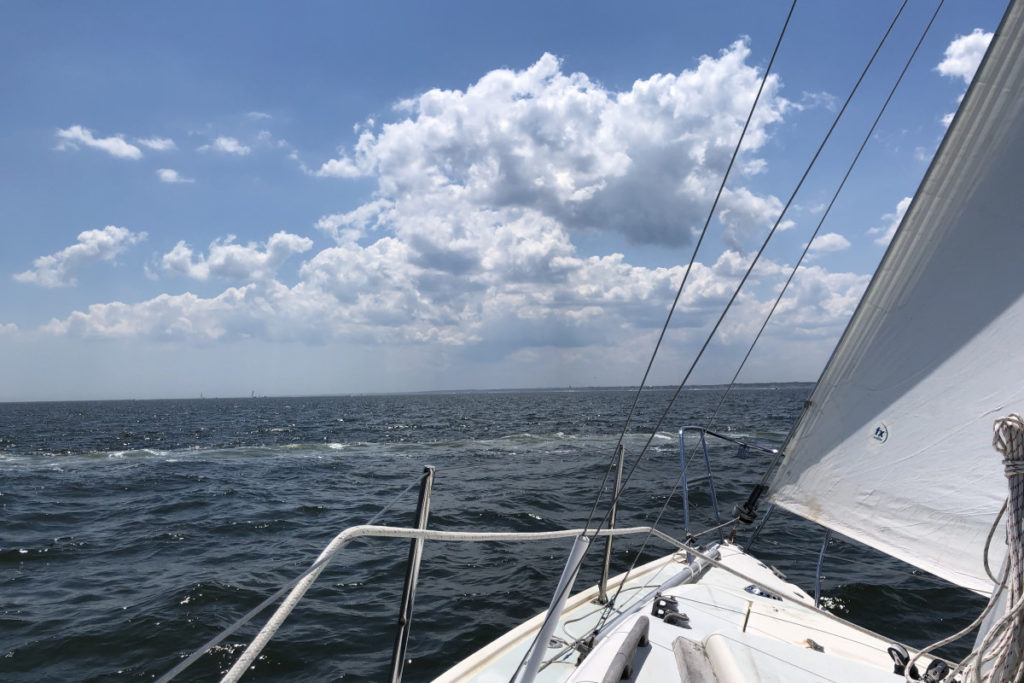
The tacks weren’t pristine, but I think doing it as a drill was a great idea. There were no stakes, and I was likely more chill than I would have been if I were trying to pass another boat or avoid someone who set the autopilot while on port tack then went below to make another gallon of painkillers. Jenn’s still learning, and I’m glad she wanted to get some practice in.
In lieu of passing other boats, I was forced to merely point out the boats that were sailing around with their fenders out: the nautical equivalent of walking around with toilet paper stuck to your shoe. I suppose that one never knows when they may be forced to tie up to a pier in the middle of the bay or be pressed into tugboat service.
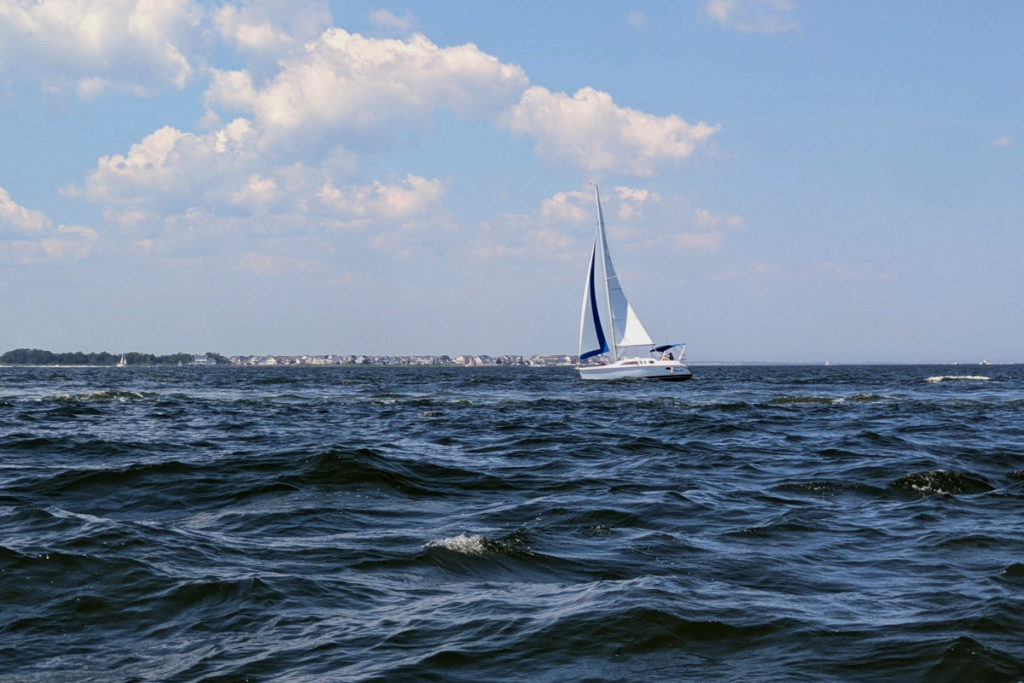
When the tacking got annoying, we jibed around and sailed off the wind for a bit. The air temperature had ticked up, which was more obvious without the wind on our faces, and I started to think about going for a swim.
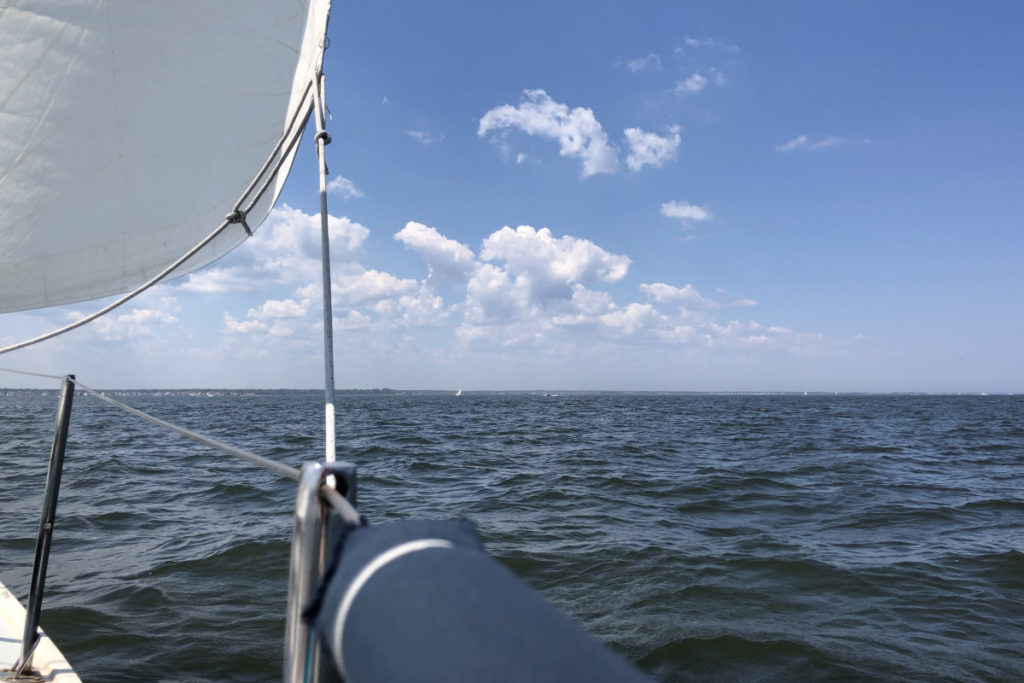
We reached back toward Berkeley Island, then furled the jib and eased past the entrance of the cove on just the main to investigate. It was pretty crowded, and I could see Governor’s Mansion from there and it didn’t really look any better. In the spirit of mixing things up a bit, I decided to see if we could anchor in Bear Cove, where I’ve never anchored. We sailed over there to check it out.
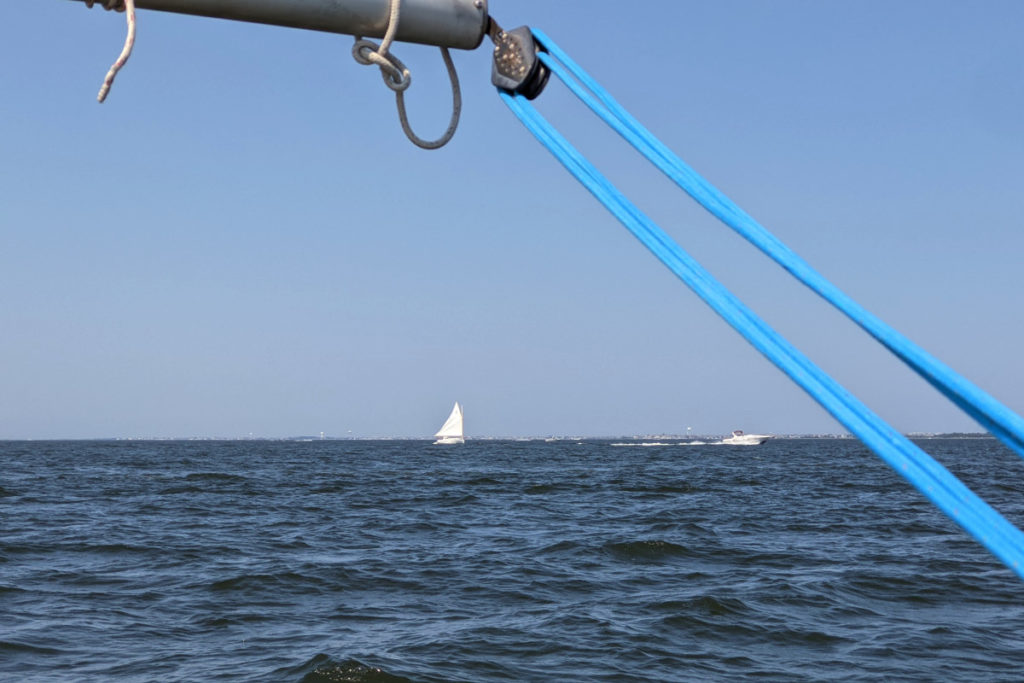
It’s not actually called Bear Cove. It’s unnamed on the charts, and I doubt it has (or warrants) a name. I don’t recall it coming up in conversations with other sailors either, probably because it’s not a place that sailboats go. It’s marked on the charts as only being 2ft deep, which is ridiculously skinny for a keelboat, although Berkeley Island Cove is also marked as 2ft and I know for sure that it’s much deeper. The only reason that I’m referring to it as Bear Cove is because it’s where the bear hangs out.
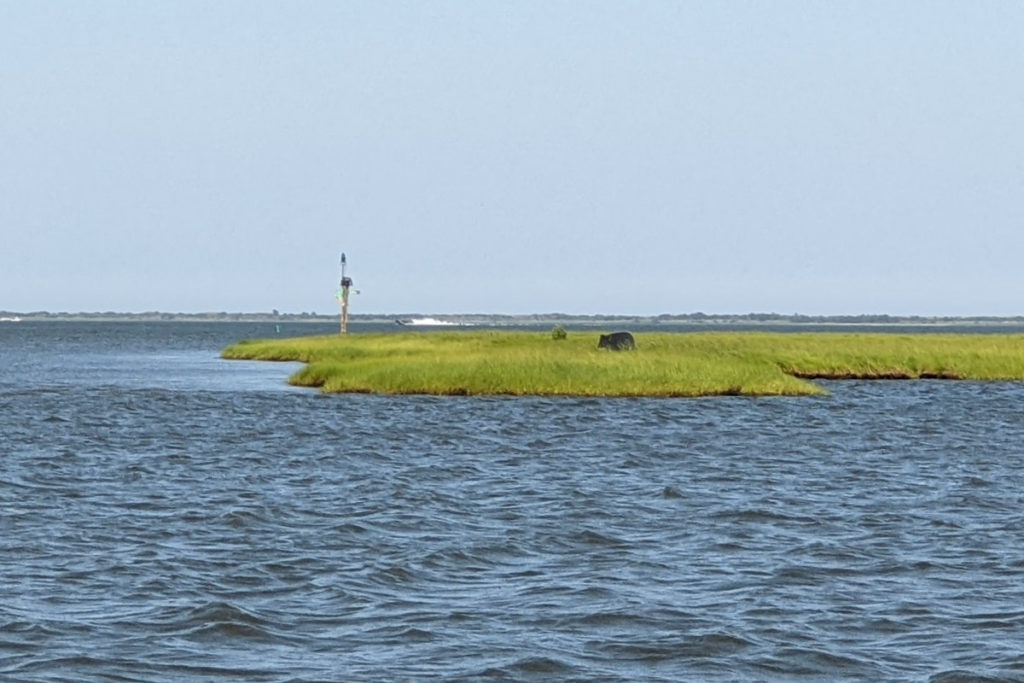
This bear silhouette has been there for as long as I’ve been sailing these waters. I’ve never understood why. It’s like the sort of thing that someone would put out to attempt to scare geese away, but it’s wild marsh and I can’t imagine needing to police who hangs out there. I’m not sure if geese are even afraid of bears. Geese are idiots.
But perhaps so am I, as I tried to put 4ft of boat into potentially 2ft of water. We doused the sails and switched to engine power as we approached. The wind was blowing out of the cove, so I was able to creep in slowly under power, paying close attention to the depth finder. We probed around a bit, and were able to go about halfway in with depth readings around 5ft, which seemed fine for a quick stop.
Incidentally, I was recently talking to a sailor from coastal British Columbia, and it is astonishing how different the water is out there. She was talking about a strait that is relatively isolated from the current, and can therefore warm up enough for swimming, even though it’s 2,000ft deep. I did some back-of-the-napkin math, and I’m pretty sure that I could leave Barnegat Inlet, point the boat generally at the west coast of Africa, and sail at hull speed for 12 full hours and not have 2,000ft of water under the keel. That’s in open ocean. The continental shelf does end abruptly and it drops off into oceanic depths beyond that, but I don’t think Fortuitous has ever ever seen triple digits on the depth finder. In British Columbia, they have fjords abutting the mainland that are a mile wide and nearly a half mile deep. It’s unfathomable to me, perhaps literally. I doubt my depth finder could register anything over a few hundred feet.
When anchoring out there (I want to call it the Pacific Northwest so badly, but she’s across the border, and it’s definitely not the Northwest of Canada) she said that she prefers anchoring in less than 40ft of depth if possible. I’m usually hoping for more than 5ft, and don’t even carry enough rode get proper scope at 40ft.
After satisfactorily surveying the depth in Bear Creek, I gave the helm to Jenn and had her jog the boat while I went forward to prepare the anchor. We hadn’t used it yet this year and I’m always mildly concerned that rode will look like a yarn ball that a cat has played with. It was fine. Having an anchor ready to deploy is a safety feature, and I don’t usually put it away messily, but I put my hose away correctly too and know how that worked out. We slowly pushed in until we had 6in of water under the keel (if the depth finder is even to be believed at that level of precision). I dropped the anchor and the wind pushed us back into deeper water with a far more comfortable 12in of margin.
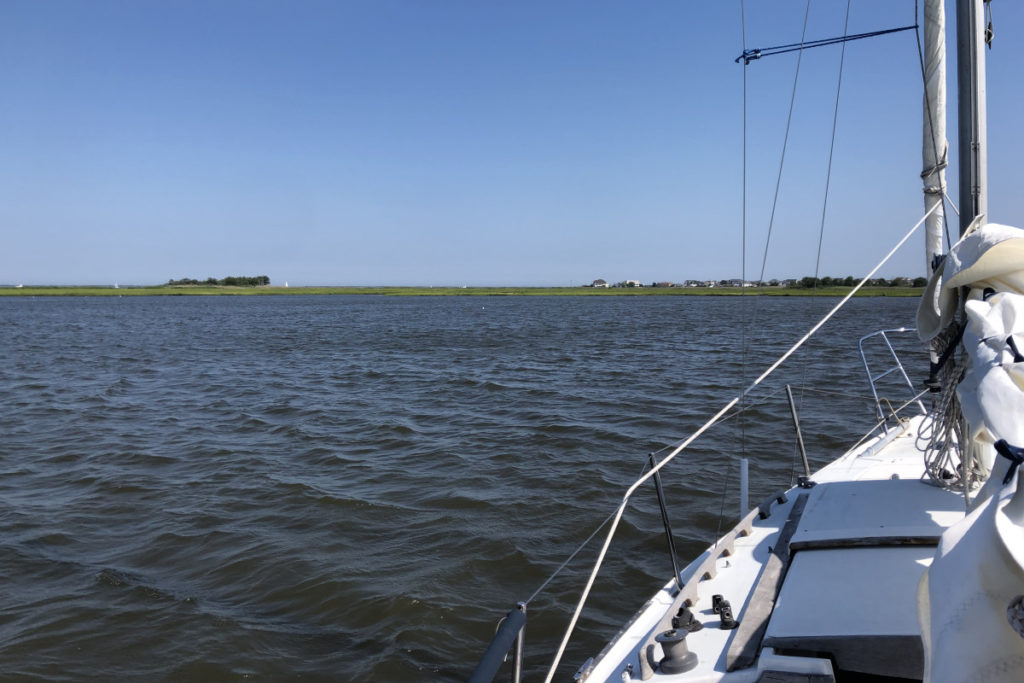
It’s not an ideal anchorage—too shallow, not terribly protected, and I couldn’t get in there far enough to be comfortably distant from the channel where the powerboats run over the NO WAKE buoys at 20kts—but we did mostly have the place to ourselves. Some jetskis came through to do their part in destroying the estuary (all PWC are supposed to operate at minimum speed within 100ft of the shoreline in New Jersey, and I assume never directly over the sedge) but they didn’t stay long. We flaked the sail, thinking that it would be cooler to do it there than at the more sheltered marina, and then took in the sights. The cove is lined with marsh to the east and south and houses and lagoons to the west, with an opening to the creek to the north. I went for a brief swim. I prefer deeper water not only for room under the keel, but also room under my feet—the creek bed isn’t exactly sandy beach like on the ocean side of the barrier islands, and it’s better when I can’t accidentally touch the muck. We continued lounging at anchor after I got back on the boat, and like children trying to count the stars, attempted to absorb the local display of Too Many Flags.
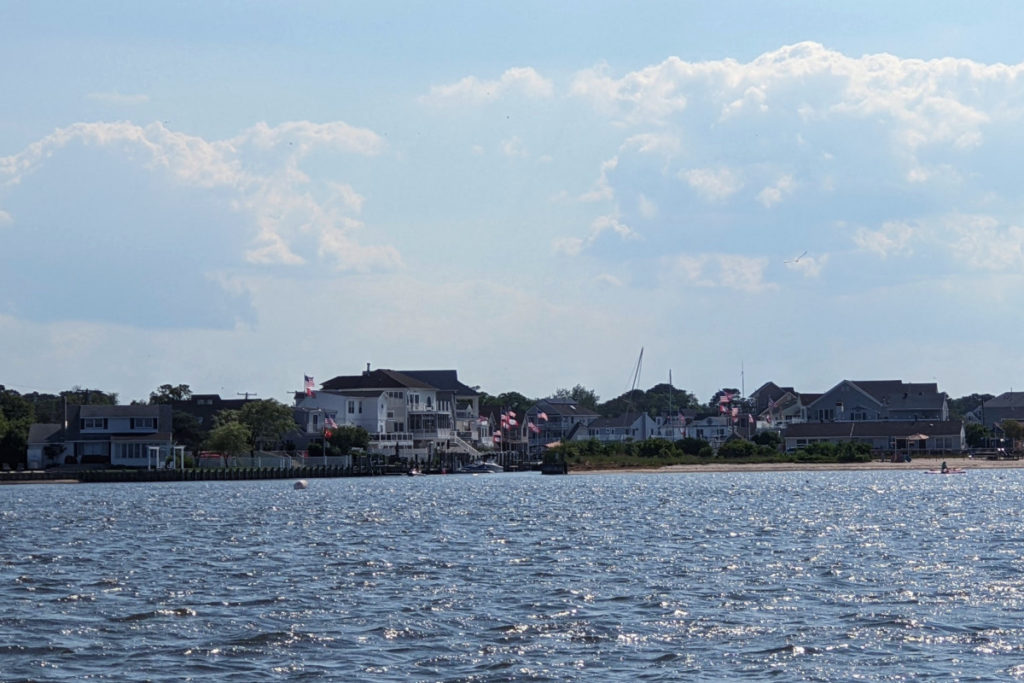
Bear Cove: ★★☆☆☆ It wasn’t the worst anchorage ever, and it might be serviceable as a lunch spot with a southerly wind during a time of low boat traffic, but I have no burning desire to go back.
But now I know, and figuring these sorts of things out is not a bad way to spend a day on the water.
